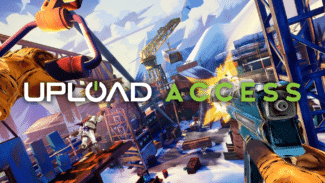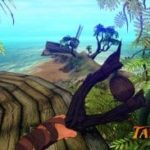We speak to Audio Manager Matt Simmonds and Audio Designer Callum Bigden about making the music and audio behind PSVR exclusive, Fracked.
When you’re envisioning a soundtrack for a game like Fracked, does the fact it’s in VR influence your work at all?
Matt Simmonds: Yes, always. Designing audio for VR brings with it a lot of opportunities for detail work in locations and a real sense of space. Fracked has a much more full-on action movie approach to audio than our previous work on Phantom, but we still focused on grounding the player in the environments and giving them a lot of spatial awareness during combat.
What did you want to achieve with Fracked’s music and what were some of the influences?
MS: The soundtrack style is based on the mixtapes that Rosalez (the helicopter pilot) plays on her ferrying trips around the complex. She has quite eclectic style choices, from house to ’90s rock to ’50s orchestral soundtracks, fused together as the player progresses through the maps. We decided early on to not always tie the action happening to the soundtrack, sometimes dropping out to more ambient pieces or remixing earlier work in for narrative references. Using the mixtape idea gave us quite a lot of scope for this.
When it comes to sound effects, did you go for traditional, realistic gun sounds etc or did the comic book art style influence you to go in other directions?
Callum Bigden: I don’t think the art style alone really influenced any stylisation for the audio. It was a conscious decision to keep to a soundscape heavily based in the real-world, whilst leaning towards the hyper-realism of blockbuster action movies like the game as a whole. So individual elements usually started off with thoughts like: “this is what it SHOULD sound like, how can we make it bigger?” I think in the end this has helped create quite a unique approach to the games overall audio.
We wanted to make the player feel at the centre of everything – whether they’re in combat or participating in a game sequence, and it just made sense to exaggerate certain elements. It was important that everything feels satisfying and punchy – guns that feel powerful and explosions that feel deadly if you are nearby but rewarding if you cause them. Combat can get hectic very quickly, with lots of sounds happening all around the player, but that is certainly part of the intensity we wanted to create. But there is still a lot of spatial info and narrative details that we have to pass onto the players, so that intensity has to be very carefully managed.
Were there any big challenges designing the audio around VR like this?
CB: The biggest challenge was getting all these often-competing big audio elements to sit alongside each other nicely in the game. You have these intense environments with broken structures, mixed in with plenty of machine guns around large set pieces – all while keeping the player informed on plot and game states. It has certainly created a very “full” soundscape, and with a lot of elements wanting all the players attention the overall sound mixing has become much more of a focus. It became heavily about how each sound event interacts with one another, more so than on any project I’ve worked on before. Take the music for example, its big and heavy, and driving the player through the levels.
Throw in combat on top – which in itself is also big and heavy – and now all the gunfire, enemies, environment and dialogue has to sit nicely with one another in the soundscape. There has been a sweet spot to aim for while mixing, and although it took quite a bit of reworking to get there, the result is a brash and commanding soundscape that we feel this genre in VR deserves. It’s been a fun process to bring this kind of audio into a VR game, and we have learnt a lot from this style of game to take forward into other projects.
Stay tuned for more Fracked content coming up on Upload Access!






